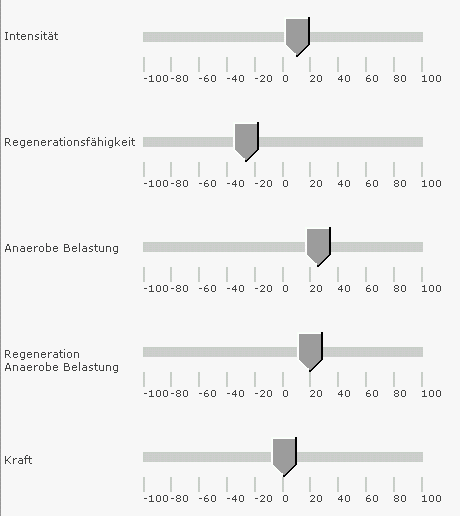What is spiroergometry and what is it used for? Find out about it in our blog article.
Spiroergometry
This method of measurement helps to answer the following questions:
- Where do I stand?
- What are my deficits/talents?
- What are my training zones (heart rate/watt)?
- How do I have to adapt my training if necessary?
Spiroergometry is a continuous measurement method for measuring the composition of respiratory gases. Since the human “engine” is a combustion engine, gas analysis allows energy metabolism to be studied. The measurement is taken during a progressive test (where you perform on different intensity steps) on the ergometer. For this purpose, the subject breathes through a mask. Spiroergometry can be stopped after the anaerobic threshold (ANS) has been exceeded (as the threshold can be seen live) or continued until reaching maximum performance level at the end of the test. Exertion until termination provides additional VO2max values and indications of their lactate tolerance.

Continuous measurement of O2 and CO2 concentration, volume flow and respiratory rate. Threshold determination by kink points in the O2 and CO2 concentration of the exhaled air.
Beyond the threshold determination, the performance diagnostics provides further information about:
- Degree of fatigue
- Quality of energy metabolism
- Muscular situation
- Breathing efficiency
Together with lactate measurement, this provides a comprehensive picture of the athlete and thus the basis for precise training control. One thing must be clear: Performance diagnostics can only capture the status quo. A benefit for the future only arises from the adapted training planning.
Tech-Talk – Parameters of performance diagnostics and their informative value
HEART RATE
The significance of the parameter heart rate with regard to individual performance is very low. This parameter should primarily be used to control the individual training intensity.
POWER
Power (watts) is an honest measure of actual performance and the best parameter for controlling individual training intensity. In the high-performance sector, training control according to power has long been the standard of all things. Hobby athletes can also use it to make their training even more efficient.
LACTAT
The dynamics of energy metabolism prohibit an assessment of performance on the basis of a single parameter. However, recently the parameter lactate as an intermediate or end product of part of the energy metabolism has been given an incomprehensible importance.
Depending on different factors such as the “buffering” capacity of the muscles against acidification, nutritional status, muscle fibre composition, etc., there are individual dynamics of lactate production and lactate degradation. While fast-acting muscles tolerate higher lactate levels due to their enzyme composition, endurance muscle fibres produce very little lactate. This already puts differentiated statements about individual performance into perspective.
However, the physiological principles are only one aspect of the lactate discussion. Serious problems arise in the mathematical evaluation of the lactate performance curve. According to which mathematical procedure are the different lactate values represented in a curve? Is the curve calculated according to the e-function or a polynomial? Studies show deviations of up to 10% of the performance at the so-called 4 mmol/l lactate threshold by using different calculation models. Often the dynamics of the lactate curve are not taken into account at all and the individual values are connected linearly.
Another argument against the exclusive use of the lactate curve as a performance-determining parameter is the fact that more than 10 different threshold concepts are now “on the market”. The aim of these threshold models is to determine a pulse rate at which work can be done in aerobic energy metabolism over a longer period of time. However, the use of different computer-based lactate evaluation software and different lactate threshold concepts yields different results.
So which training pulse rates apply to the individual athlete? Deviations in pulse rates of more than 10% are normal. This means that a pulse rate of 150/min or 135/min can be determined as a training recommendation for training in the aerobic range. Anyone who trains with a pulse rate in mind can estimate how inaccurate this information is.
RESPIRATORY QUOTIENT RQ
The RQ is the quotient of carbon dioxide emitted and oxygen taken in. This indicates the range in which the organism works mainly with oxygen. If the value is below 1, more oxygen is absorbed than CO2 is released. If the value is above 1, more CO2 is released than oxygen is absorbed. This value can be used, among other things, to determine from which metabolism the energy for muscle contraction is obtained. In a range between R is 0.75 and 0.80, energy is primarily obtained from aerobic fat metabolism. At values above 1, anaerobic energy metabolism is dominant.
For cyclists, it is particularly interesting to know how high the fat-burning percentage is in which training range. For long competitions, it is essential to raise fat burning to as high a level as possible in order to conserve the limited carbohydrate reserves. That is why even sprinters train mainly in the Z2 range in order to create the conditions for experiencing the finish sprint at all.

Proportion of fat burning at different RQs.

The figure shows a striking progression of the RQ in the more intensive range (marked with a circle). It can be assumed that the previous loads were too high for the athlete and that regeneration training is necessary in the coming weeks.
Breathing equivalent and breathing rate
The oxygen respiratory equivalent is a criterion for the ventilation required per 1 litre of O2 intake. The more volume of air needed to take in 1000 ml of O2, the more you have to breathe. Here you reach your limits relatively quickly and consequently can no longer supply the organism with enough O2. A value between 22 and 24 is within the normal range, values below this indicate economical breathing, values above this indicate uneconomical breathing. The respiratory rate is closely related to this.
 The figure shows an optimal course of the oxygen-breath equivalent (blue) and the breathing rate (green). The values of the respiratory equivalent are in the lower normal range and show economical breathing. The respiratory rate is also very low. One can assume relaxed breathing.
The figure shows an optimal course of the oxygen-breath equivalent (blue) and the breathing rate (green). The values of the respiratory equivalent are in the lower normal range and show economical breathing. The respiratory rate is also very low. One can assume relaxed breathing.
Exhaled CO2 concentration (FECO2) and exhaled O2 concentration (FEO2)
These two parameters are necessary to determine the aerobic/anaerobic transition. The increase of FEO2 (blue) and the decrease of FECO2 (red) show the time of the beginning of the anaerobic phase. The different training ranges can be determined independently of the lactate.
 The analysis shows the individual anaerobic threshold completely independent of the lactate measurement through distinctive kink points in the O2 and CO2 curves.
The analysis shows the individual anaerobic threshold completely independent of the lactate measurement through distinctive kink points in the O2 and CO2 curves.
Anomalies in the course of FECO2 and FEO2 have to be interpreted and translated into training adaptations.
 The figure shows a two-phase decrease or increase in respiratory gas concentrations. When looking at the metabolic parameter lactate, it can be seen that the musculature reacts very sensitively to exertion, as the first drop in FECO2 leads to the first rise in lactate and only the second drop in FECO2 shows a sustained rise in lactate concentration. These performance reserves can be compensated for by strength-based training.
The figure shows a two-phase decrease or increase in respiratory gas concentrations. When looking at the metabolic parameter lactate, it can be seen that the musculature reacts very sensitively to exertion, as the first drop in FECO2 leads to the first rise in lactate and only the second drop in FECO2 shows a sustained rise in lactate concentration. These performance reserves can be compensated for by strength-based training.
Training adaptation
Based on the information gained, the 2PEAK trainer can make fine adjustments to the training plan (e.g. by purchasing expert tickets), which will have a global effect on the training:

“Mixer” for individual adaptation of the training parameters.
Training volume and intensity also remain variable and adapt to the individual situation.
Create a training plan for triathlon, cycling, and running based on artificial intelligence with 2PEAK that adapts to your performance after each training. Download the app and start revolutionizing your training.


